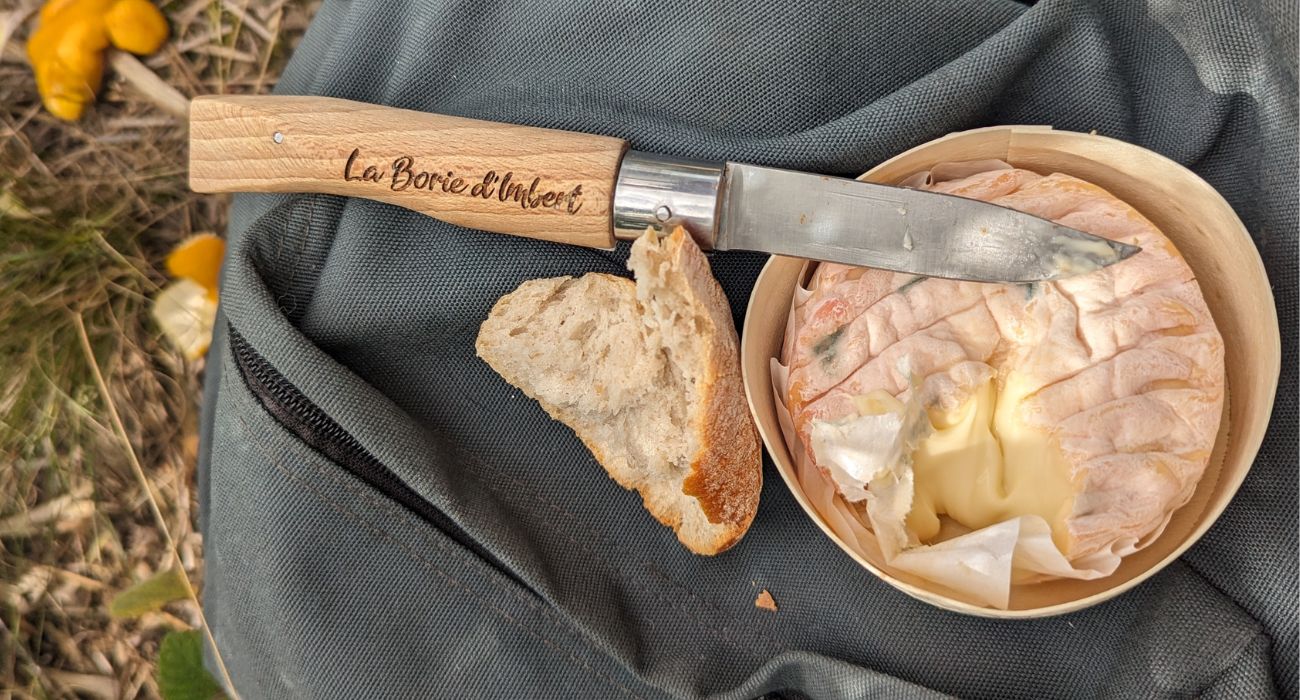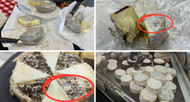Understanding Surface Mould
22nd Dec 2024
Enjoying a Soumaintrain during a hike - small spots of blue mould present, but nothing to fear and totally fine to enjoy!

Ahhh, mould—one of the remarkable elements that preserve cheese, enhance its flavor, and, in our eyes, make cheese look beautiful! Before we delve into this topic, we want to firstly mention, that if you are uncomfortable with mould, that is completely fine. We are not trying to deceive anyone, more educate customers as this is out of our control and will always be a factor with the cheeses we sell, whether they are from Australia, Europe or anywhere else in the world. We would never offer you a product that would make you sick.
When you purchase artisan cheeses, you’re not just buying a product; you’re experiencing a tradition, a craft that has been honed over centuries. One of the most important parts of our job at Le Fromage Yard is to educate our customers, helping them to embrace the unique characteristics of these handcrafted delicacies, and that includes understanding surface mould.
Surface mould on cheese is completely normal and is, in fact, a sign of a well-aged, lovingly crafted product. This natural mould develops on the rind of the cheese during the aging process, contributing to the depth and complexity of its flavours. Each mould is unique, reflecting the environment in which the cheese was made, and it plays a vital role in the cheese’s maturation.
Far from being something to fear, surface mould is part of the magic that transforms simple milk into a rich, flavourful cheese. It’s entirely safe to eat, or if you prefer, you can simply scrape it off. Either way, it’s all part of the cheese experience.The next time you spot some mould on your cheese, don’t worry. Celebrate it! It’s a testament to the craftsmanship and tradition behind every wheel and wedge. Happy cheese tasting!
What Types of Cheeses Develop Mould?
Several types of cheeses naturally develop surface mould as part of their aging process. These moulds contribute significantly to the flavour, texture, and overall character of the cheese. Here are some common types:
- Bloomy Rind Cheeses
- Examples: Brie, Camembert, and Triple Crème
- Mould Type: Penicillium candidum
- Characteristics: Known for their soft, white, edible rind, these cheeses have a creamy, buttery texture inside. The mould on the surface adds a mild, mushroomy flavour.
- Note: From our experience, most customers are fine with this sort of mould and eat it without any fear.
- Washed Rind Cheeses
- Examples: Taleggio, Epoisses, and Limburger
- Mould Type: Brevibacterium linens
- Characteristics: These cheeses are periodically bathed in brine, beer, or wine during aging, which encourages the growth of orange or reddish mould. This gives the cheese its distinctive strong aroma and a sticky, flavourful rind.
- Note: Washed rind cheeses can sometimes develop blue spots of mould, which occur when Penicillium moulds naturally present in the environment settle on the cheese. These spots are harmless and can be eaten or removed, depending on your preference.
- Natural Rind Cheeses
- Examples: Tomme de Savoie, Clothbound Cheddar
- Mould Type: Varied (wild moulds from the aging environment)
- Characteristics: Aged without added mould cultures, these cheeses develop natural moulds on their surface, contributing to their earthy and robust flavours.
- Blue Cheeses
- Examples: Roquefort, Gorgonzola, and Stilton
- Mould Type: Penicillium roqueforti or Penicillium glaucum
- Characteristics: Blue cheeses are veined with blue or green mould throughout the cheese, contributing to their complex, tangy flavour. The surface may also develop additional mould, enhancing the cheese’s character.
- Geotrichum-Rinded Cheeses
- Examples: Crottin de Chavignol, Saint-Marcellin, Chabichou
- Mould Type: Geotrichum candidum
- Characteristics: These cheeses have a wrinkly, brain-like surface created by Geotrichum mould, adding a delicate rind with a slightly tangy, yeasty flavour.
- Note: Like washed rind cheeses, Geotrichum-rinded cheeses can also develop blue spots of mould. These spots are a natural occurrence, typically the result of Penicillium moulds, and are completely safe to eat or can be removed if you prefer.
- Soft Ripened Goat Cheeses
- Examples: Valençay, Selles-sur-Cher, Saint Maure
- Mould Type: Mixed (often Penicillium candidum with natural or added ash)
- Characteristics: These cheeses may have a combination of white mould and a layer of edible ash, giving them a distinctive appearance and contributing to their slightly tangy, earthy taste.
Each type of mould is carefully managed by cheese makers to ensure it enhances the cheese’s flavour and texture. Far from being a flaw, these moulds are an integral part of the artisan cheese experience, bringing depth and character to every bite.
We always try to let customers know what they are buying and if there is any surface mould, but if we have missed something and you are unsure, you can always email us and we will get back to you as quickly as possible :)

